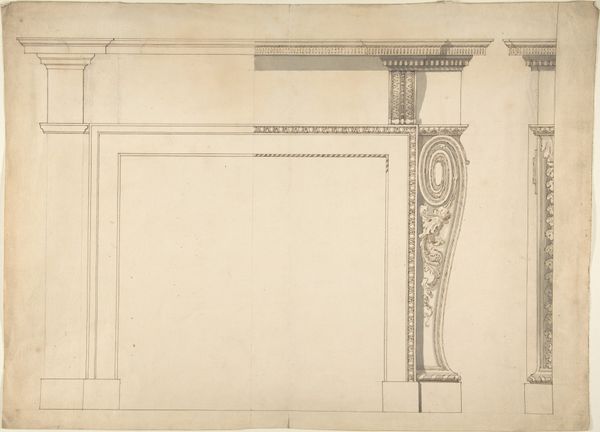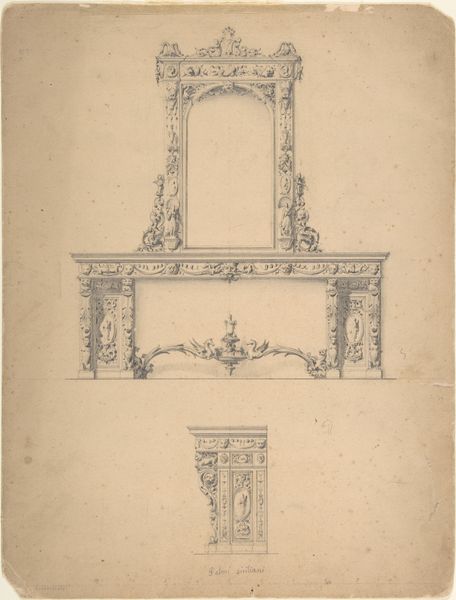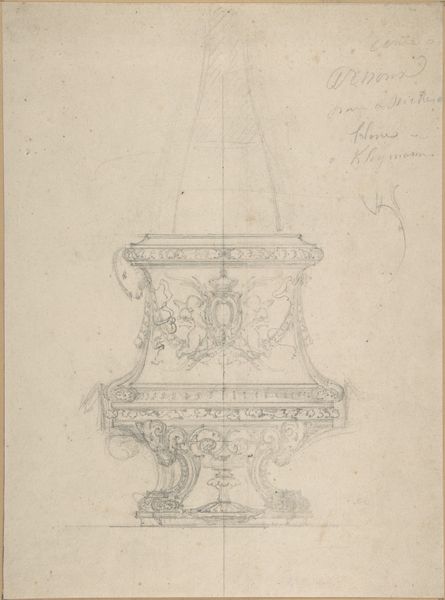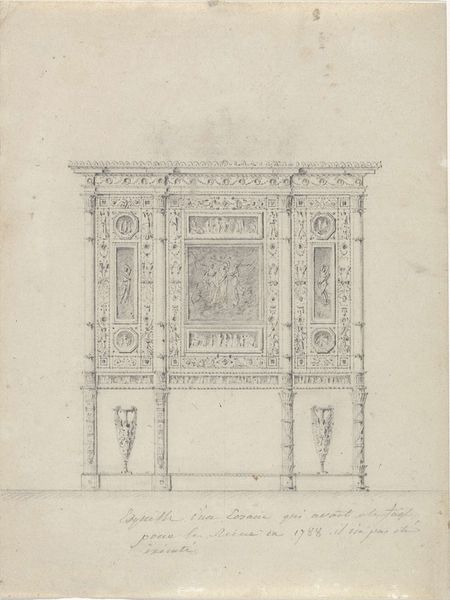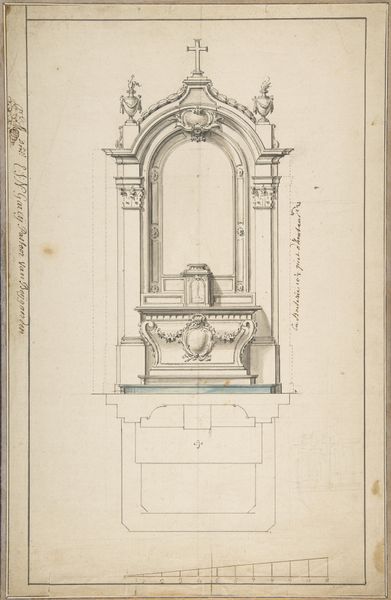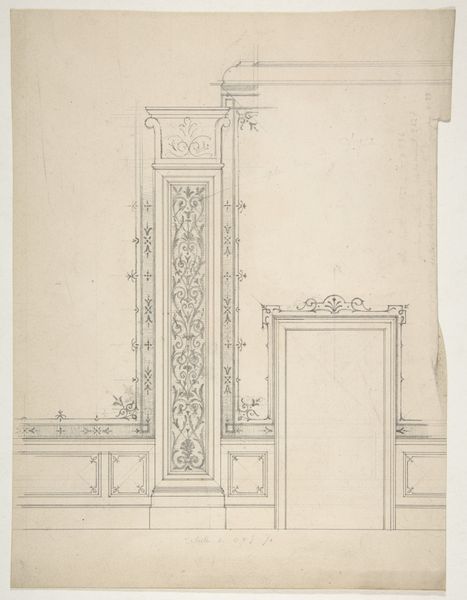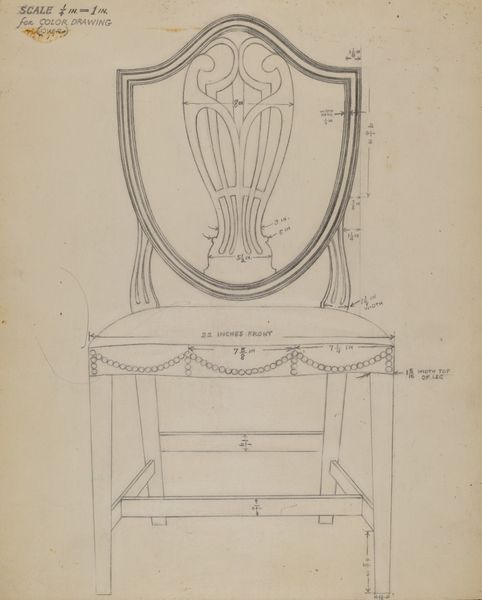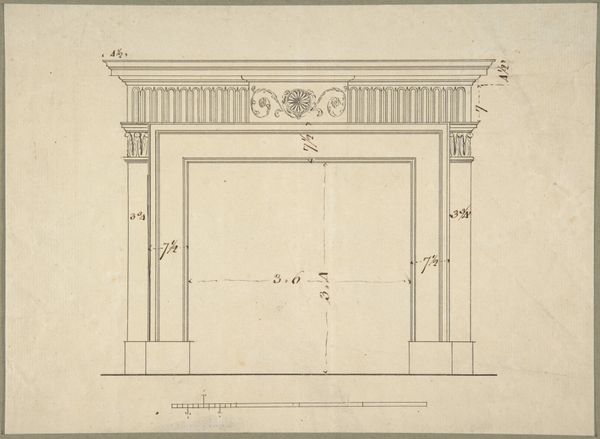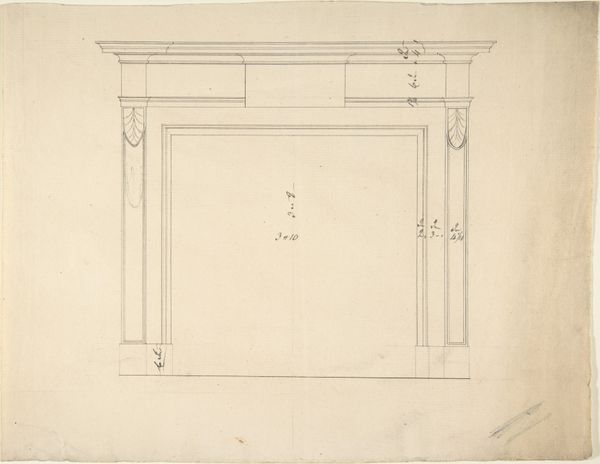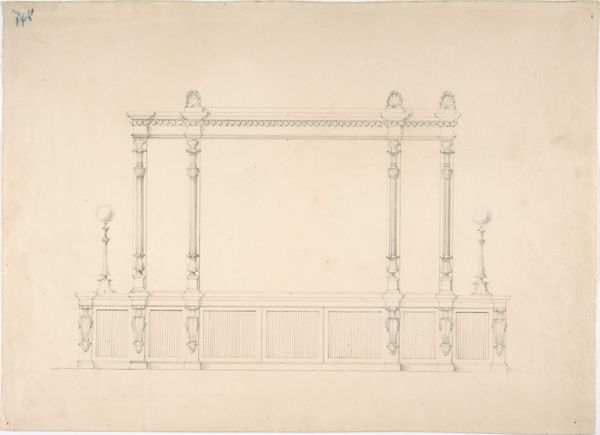
drawing, paper, pencil, architecture
#
drawing
#
classical-realism
#
paper
#
form
#
geometric
#
classicism
#
pencil
#
line
#
architecture
Dimensions: overall: 53.5 x 38.2 cm (21 1/16 x 15 1/16 in.)
Copyright: National Gallery of Art: CC0 1.0
Curator: This delicate drawing, rendered in pencil on paper, is John Marin's "Entablature - Doric Order," dating from around 1888. Editor: My immediate impression is one of quiet authority, almost austere. The lines are so precise, evoking a sense of classical order and balance. Curator: It's a fascinating glimpse into architectural drafting of the late 19th century, where precision and standardized forms dictated the construction of monumental structures. We can really see the hand of the artist carefully mapping out proportions, paying respect to historical precedents while demonstrating the work and knowledge needed to generate architectural innovation. Editor: Absolutely. Look at the repetition of form – the vertical lines, the echoing curves within the ornamentation. And the artist emphasizes specific imagery rooted in classical Greece, meant to elicit harmony and reason. Even these stylized palmettes possess such symbolic resonance, calling back centuries of artistic tradition. What story are they trying to communicate through visual style? Curator: The material itself informs that reading, I believe. It’s just a drawing; the materiality is inexpensive paper, commonplace graphite. This entablature may well be for a building of tremendous cost and societal importance, yet the creative stage consists simply of skilled drafting. These drawings enabled these monumental structures through carefully managed labor, turning humble material into power, knowledge, and value. Editor: But isn’t the focus itself significant? Marin wasn’t just creating a blueprint; he was choosing to study and replicate these forms. The Doric order speaks to enduring ideals of beauty and civilization. This architectural representation invites us to contemplate cultural permanence and to invest in that symbolic continuity. Curator: And yet, by documenting it through these everyday materials of paper and pencil, it renders these historical cultural claims vulnerable, portable, and part of daily life. What had been an emblem of social hierarchy becomes approachable to common citizens through a drawing. Editor: I see your point. It highlights both the grandeur and accessibility of artistic and architectural language. The icons live on for anyone to access and adapt, however they see fit. Curator: So, on the one hand we see the hand, tools, and effort that go into translating these enduring monuments, while on the other, we are confronted with the powerful icons representing shared values and cultural heritage. Editor: Indeed, the simplicity of the medium contrasts the loaded history of the chosen architectural symbols. It's a conversation between form and function, art and representation, then and now.
Comments
No comments
Be the first to comment and join the conversation on the ultimate creative platform.

